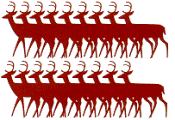United States Department of Agriculture, National Wildlife Research Center: Symposia

Contraception in Wildlife Management
Date of this Version
October 1993
Abstract
The raging North American controversy over the reintroduction of wolves into the ecosystem of the greater Yellowstone National Park area exemplifies the emotive relationship between humankind and the Carnivora. What forces act in concert to portray this much maligned Order in unfavorable light? Control of free-ranging carnivore populations by Homo sapiens has been practiced for centuries as part of a pastoral lifestyle, with the intent of protecting one's own life and livelihood from becoming freshly killed prey in the onslaught from mammalian competitors. Traditionally, control is equated most commonly with population reduction through direct elimination of individuals (e.g., typically social canids or solitary large-bodied felids) via lethal means including shooting, poisoning, trapping, gassing of dens, and habitat modification (Lewis 1968, U.S. Department of Agriculture 1992). In addition to reducing direct predation upon domestic livestock (sheep and cattle losses alone in the United States are estimated in excess of $80,000,000 annually [U.S. Department of Agriculture, National Agricultural Statistics Service 1991j), other perceived beneficial aspects of free-ranging carnivore population reduction include conservation of endangered species, such as Australian marsupials, subject to predation by introduced European red foxes (Boyle 1994), conservation of otherwise "desirable" species (game fowl and wild ungulates), and the alleviation of objectionable human-carnivore interactions (Wynne-Edwards 1964).


Comments
Contraception in wildlife management. APHIS Technical Bulletin No. 1853. USDA, Animal and Plant Health Inspection Service, Washington, D.C., USA.